A Novel Low Cost Wireless Incontinence Sensor System (Screen-Printed Flexible Sensor System) for Wireless Urine Detection in Incontinence Materials †
1. Summary
2. Introduction and Motivation
3. Sensor design and manufacturing
- -
- detect the amount of the liquids inside the diaper and gives electrical signal to cloud or caregiver
- -
- low cost
- -
- bio compatible (ISO 10993)
- -
- flexible and stretchable
- -
- easy integration in a standard diaper
- -
- wireless interface compatible to standards in medical systems.
4. Results and Conclusions
References
- Someya, T. Stretchable Electronics; Wiley-VCH: Weinheim, Germany, 2013; ISBN 978-3-527-32978-6. [Google Scholar]
- Takei, K. Flexible and Stretchable Medical Devices; Wiley-VCH: Weinheim, Germany, 2018; ISBN 978-3-527-34183-2. [Google Scholar]
- Nitti, V.W. The prevalence of urinary incontinence. Rev. Urol. 2001, 3, S2–S6. [Google Scholar] [PubMed]
- Olivo, T. Adult Incontinence: A Market Rife with Opportunity. 2017. Available online: https://www.nonwovens-industry.com/issues/2017-03-01/view_features/adult-incontinence-a-market-rife-with-opportunity (accessed on 20 December 2018).
- National Institute of Mental Health. Mental Illness; National Institute of Mental Health: Bethesda, MD, USA, 2017. [Google Scholar]
- Zion Diapers Market (Pad Type, Pants Type, and Flat Type Adult Diapers): Global Industry Perspective, Comprehensive Analysis, and Forecast, 2015–2021. Available online: https://www.zionmarketresearch.com/news/global-adult-diapers-market (accessed on 20 December 2018).
- Magdassi, S. Nanomaterials for 2D and 3D Printing; Wiley-VCH: Weinheim, Germany, 2017; ISBN 978-3-527-33819-1. [Google Scholar]
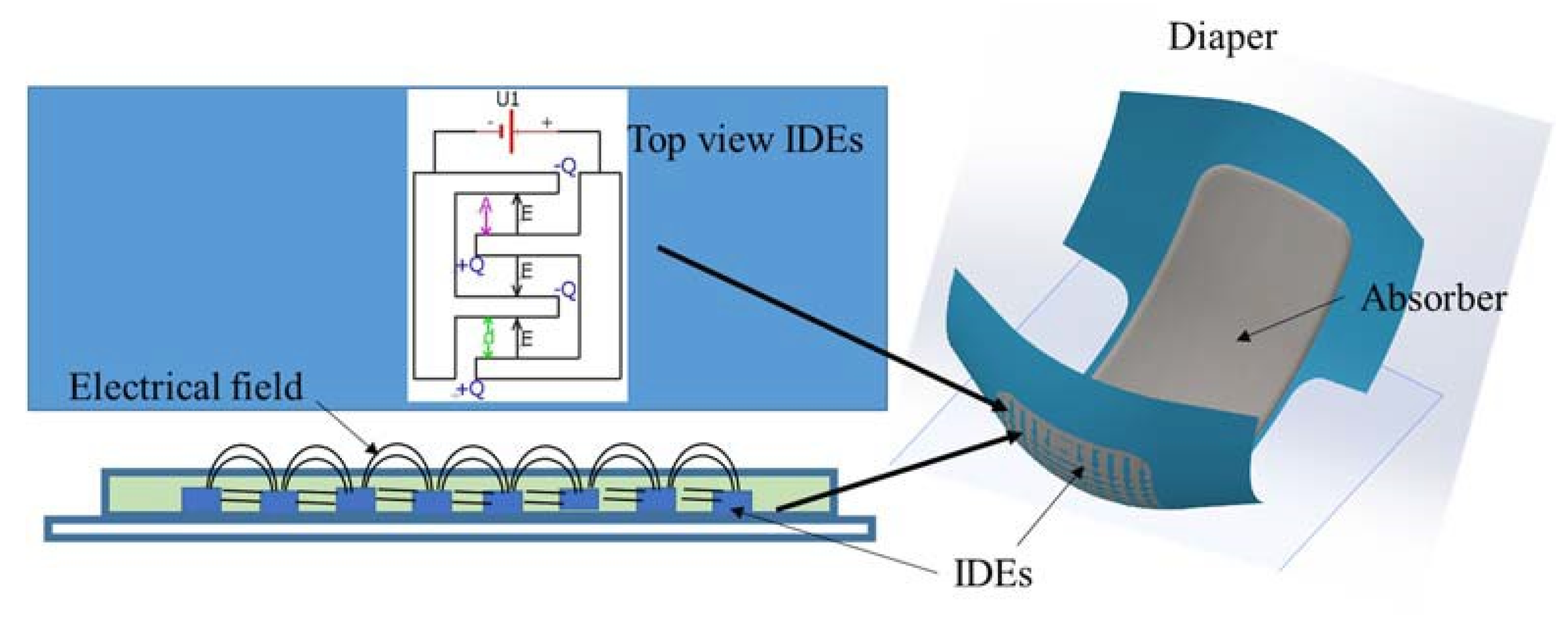
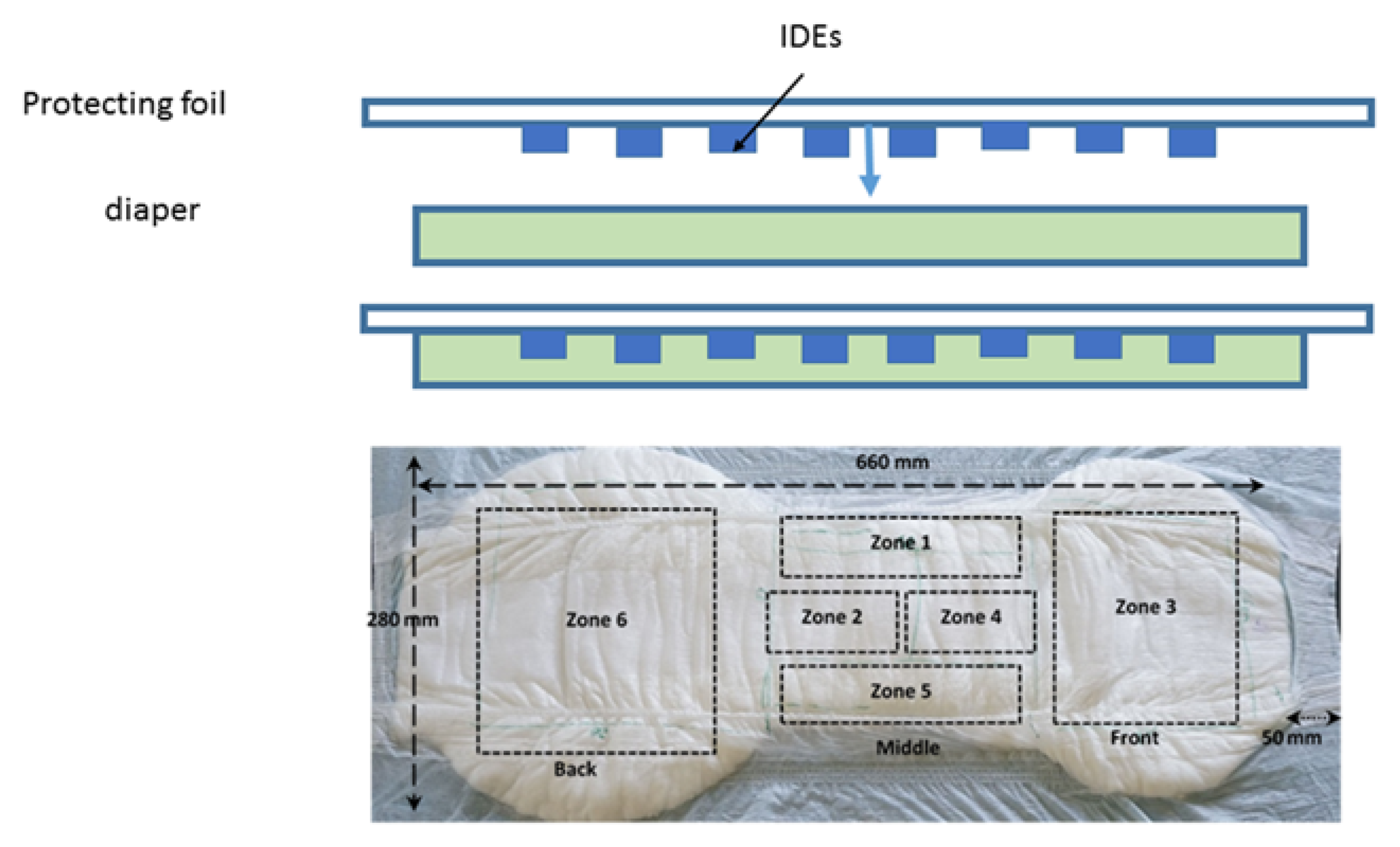
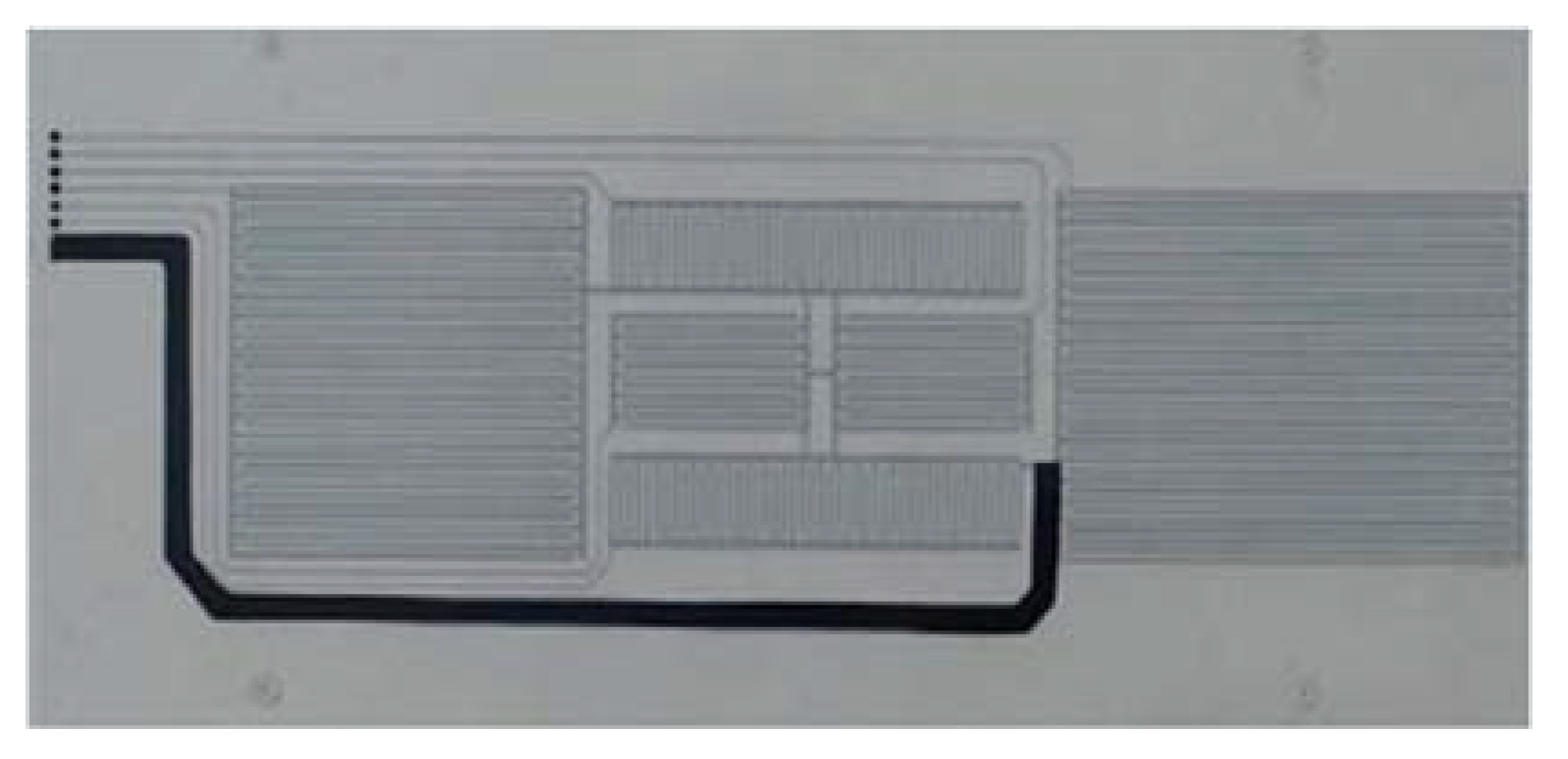
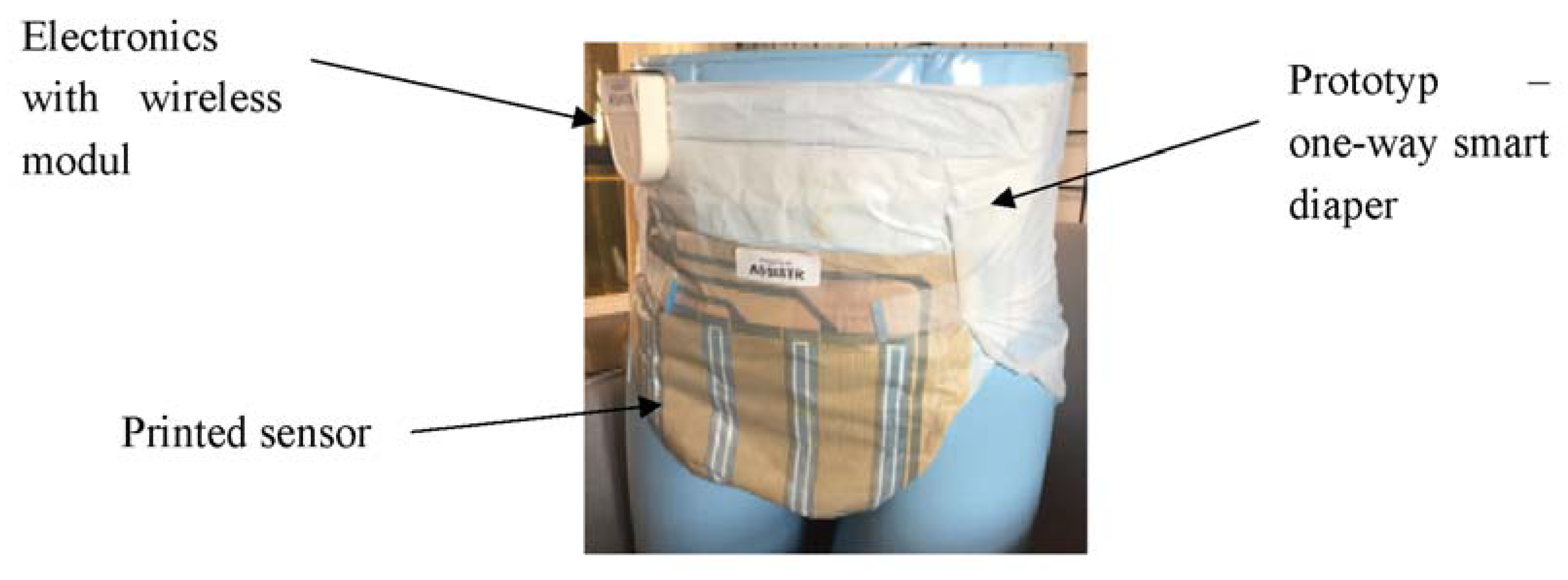
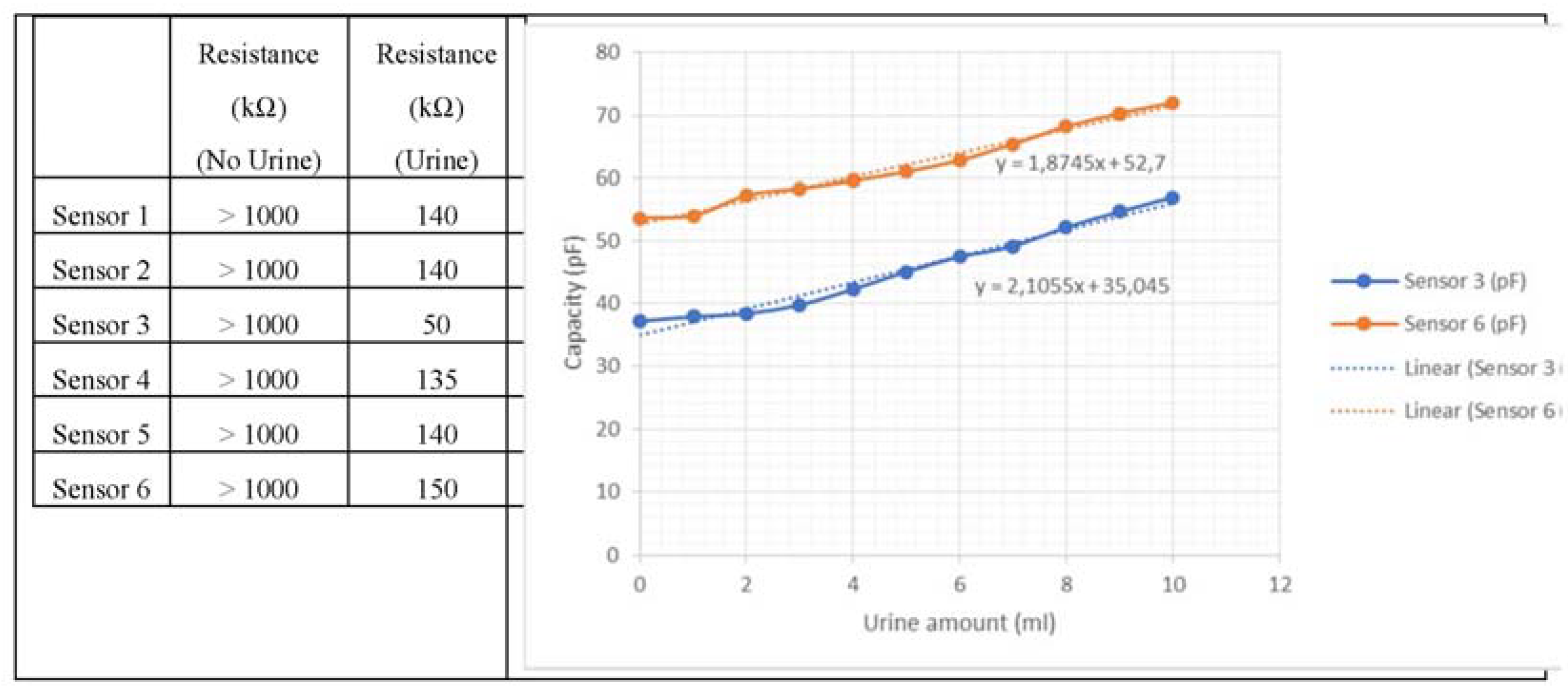
| Sensor | Size L (mm) | Number of the Sensor’s Fingers N |
|---|---|---|
| 1 | 38 | 46 |
| 2 | 88 | 12 |
| 3 | 158 | 38 |
| 4 | 38 | 46 |
| 5 | 88 | 12 |
| 6 | 208 | 38 |
Publisher’s Note: MDPI stays neutral with regard to jurisdictional claims in published maps and institutional affiliations. |
© 2018 by the authors. Licensee MDPI, Basel, Switzerland. This article is an open access article distributed under the terms and conditions of the Creative Commons Attribution (CC BY) license (https://creativecommons.org/licenses/by/4.0/).
Share and Cite
Ngo, H.-D.; Hoang, T.H.; Baeuscher, M.; Wang, B.; Mackowiak, P.; Grabbert, N.; Weiland, T.; Ehrmann, O.; Lang, K.-D.; Schneider-Ramelow, M.; et al. A Novel Low Cost Wireless Incontinence Sensor System (Screen-Printed Flexible Sensor System) for Wireless Urine Detection in Incontinence Materials. Proceedings 2018, 2, 716. https://doi.org/10.3390/proceedings2130716
Ngo H-D, Hoang TH, Baeuscher M, Wang B, Mackowiak P, Grabbert N, Weiland T, Ehrmann O, Lang K-D, Schneider-Ramelow M, et al. A Novel Low Cost Wireless Incontinence Sensor System (Screen-Printed Flexible Sensor System) for Wireless Urine Detection in Incontinence Materials. Proceedings. 2018; 2(13):716. https://doi.org/10.3390/proceedings2130716
Chicago/Turabian StyleNgo, Ha-Duong, Thanh Hai Hoang, Manuel Baeuscher, Bei Wang, Piotr Mackowiak, Nils Grabbert, Thomas Weiland, Oswin Ehrmann, Klaus-Dieter Lang, Martin Schneider-Ramelow, and et al. 2018. "A Novel Low Cost Wireless Incontinence Sensor System (Screen-Printed Flexible Sensor System) for Wireless Urine Detection in Incontinence Materials" Proceedings 2, no. 13: 716. https://doi.org/10.3390/proceedings2130716
APA StyleNgo, H.-D., Hoang, T. H., Baeuscher, M., Wang, B., Mackowiak, P., Grabbert, N., Weiland, T., Ehrmann, O., Lang, K.-D., Schneider-Ramelow, M., & Grudno, J. (2018). A Novel Low Cost Wireless Incontinence Sensor System (Screen-Printed Flexible Sensor System) for Wireless Urine Detection in Incontinence Materials. Proceedings, 2(13), 716. https://doi.org/10.3390/proceedings2130716





